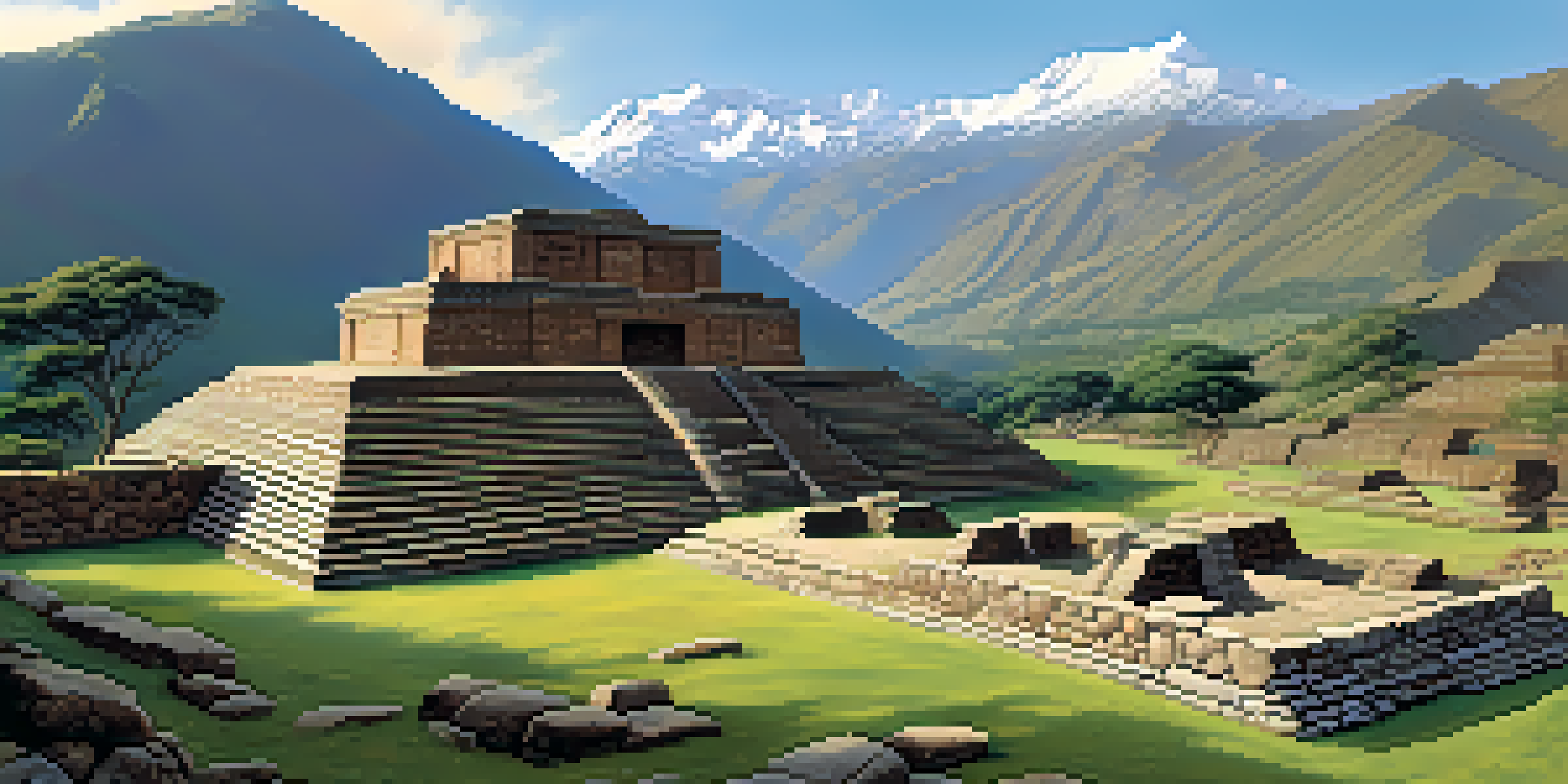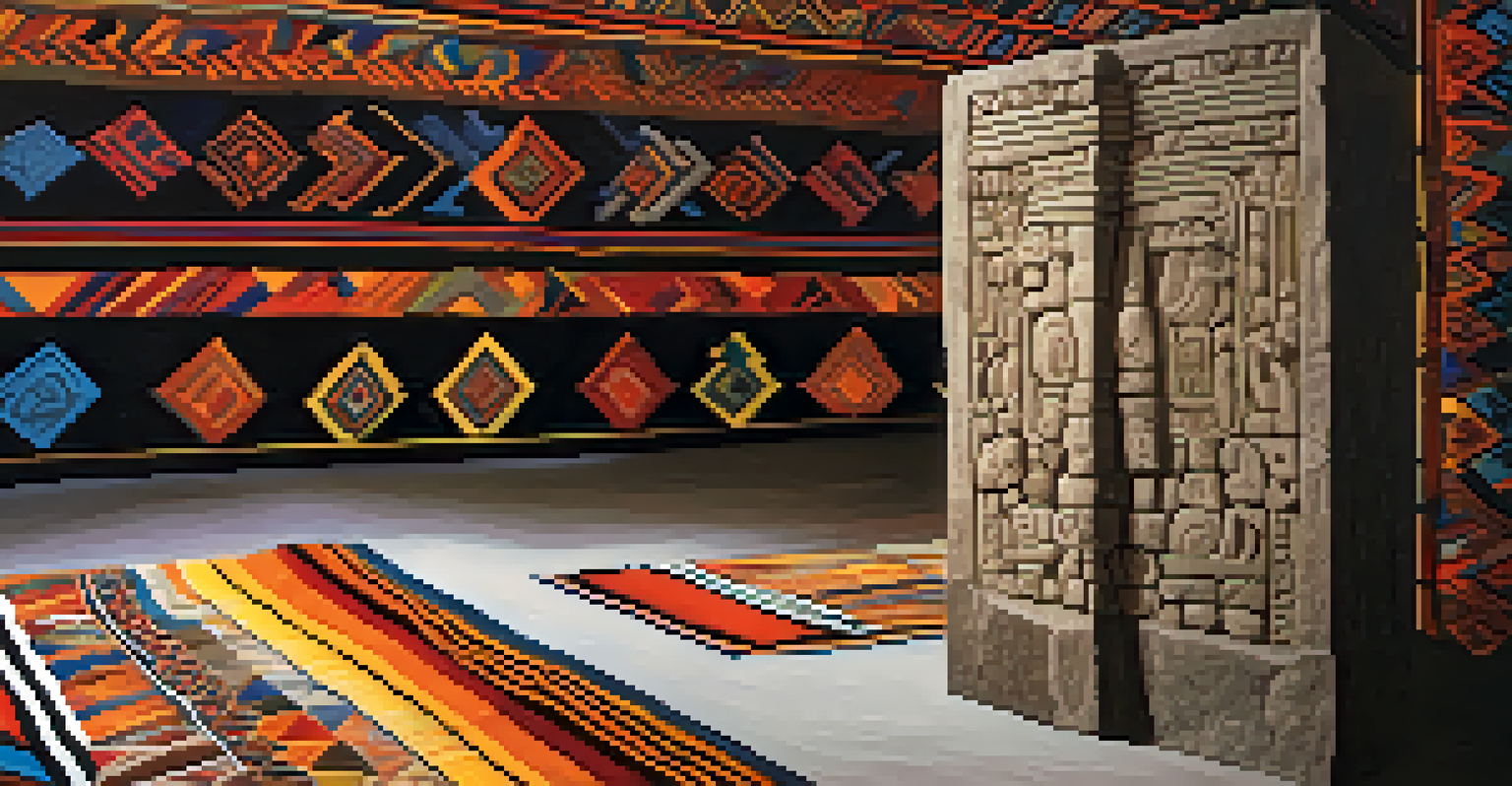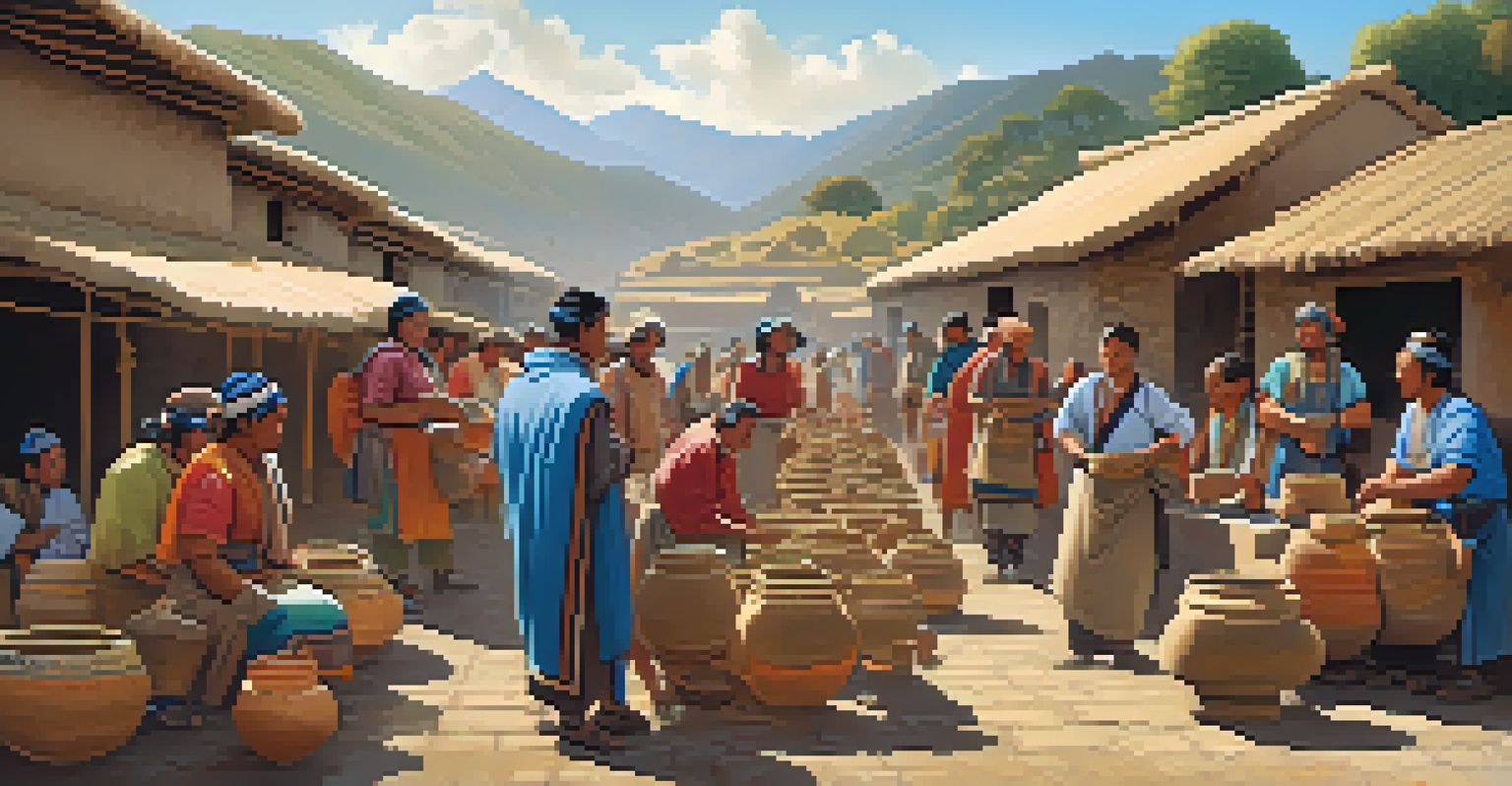Chavin de Huantar: A Hub for Trade and Cultural Exchange

Understanding Chavin de Huantar's Historical Context
Chavin de Huantar, an archaeological site in Peru, dates back to around 900 BC. It represents one of the earliest complex societies in the Andes, showcasing advanced architectural and artistic achievements. The site is often seen as a cornerstone of the Andean civilization, influencing later cultures in the region.
History is not a burden on the memory but an illumination of the soul.
Nestled in the highlands of Peru, Chavin de Huantar was strategically located at the intersection of various trade routes. This advantageous position allowed it to thrive economically and culturally. The blending of diverse peoples and ideas facilitated significant developments in art, religion, and technology.
Understanding this context helps us appreciate how Chavin de Huantar became a melting pot of cultural exchange. Its role in fostering interactions between different communities set the stage for the rich tapestry of Andean history that followed.
The Role of Trade in Chavin de Huantar's Growth
Trade was a lifeline for Chavin de Huantar, connecting it with coastal and lowland regions. Artifacts found at the site, such as pottery and textiles, indicate that goods were exchanged not just locally but over long distances. This trade network was crucial for the economic stability and growth of the civilization.

Chavin de Huantar became known for its unique style of art and architecture, which included intricate stone carvings and elaborate temple structures. These attractions drew merchants and travelers, boosting the local economy. As a result, the exchange of goods was often accompanied by the exchange of ideas.
Chavin de Huantar: Cultural Hub
Chavin de Huantar served as a melting pot of diverse cultures, facilitating significant exchanges in art, religion, and technology.
Through trade, Chavin de Huantar evolved into a cultural hub where technology, art, and religious practices mingled. This interconnectedness played a significant role in shaping the identity of the Andean civilizations that followed.
Cultural Exchange: Religion and Spirituality
At the heart of Chavin de Huantar's influence was its religious significance. The site was believed to be a spiritual center, drawing pilgrims from various regions seeking divine connection. The Chavin culture's religious practices featured unique deities and rituals that were shared across different groups.
The past is never dead. It's not even past.
The famous Lanzón stone, a monolithic sculpture, serves as a testament to the site's religious importance. It depicts a deity that embodies various aspects of Andean spirituality. This shared belief system fostered a sense of unity among diverse groups that visited the site.
As people came together for spiritual purposes, they also shared knowledge and customs, enriching the cultural landscape of the region. This blending of ideas helped to create a more cohesive Andean identity, with Chavin de Huantar at its core.
Artistic Innovations at Chavin de Huantar
Chavin de Huantar is renowned for its artistic innovations, particularly in sculpture and pottery. The intricate carvings found at the site reveal a mastery of stonework and an eye for detail that was ahead of its time. These artistic contributions greatly influenced subsequent Andean cultures, setting a standard for beauty and craftsmanship.
The pottery from Chavin de Huantar often features intricate designs and motifs that tell stories of the culture and its beliefs. This artistic expression was not merely decorative; it played a significant role in rituals and daily life. The aesthetics of Chavin art reflect the interconnectedness of trade, spirituality, and cultural identity.
Trade Fueled Economic Growth
The strategic location of Chavin de Huantar allowed it to thrive through extensive trade networks, enhancing its economic stability and cultural richness.
As artisans shared techniques and styles through trade, the art of Chavin de Huantar spread beyond its borders. This exchange fostered a rich artistic tradition that would continue to evolve, highlighting the enduring impact of Chavin culture on the Andean region.
Architectural Marvels: Structures of Chavin de Huantar
The architectural layout of Chavin de Huantar showcases remarkable ingenuity, featuring elaborate temples and ceremonial spaces. The use of stone construction and sophisticated drainage systems illustrates an advanced understanding of engineering for its time. These structures were not just functional; they also served as symbols of power and religious significance.
One of the most notable features is the Old Temple, which contains a labyrinthine design that reflects the complexity of Chavin society. Visitors would navigate through these spaces, experiencing a blend of art, architecture, and spirituality. This careful design facilitated community gatherings and rituals, reinforcing social cohesion.
As travelers and traders visited, they were often awed by the grandeur of Chavin's architecture. This admiration helped to solidify Chavin de Huantar's reputation as a center of cultural exchange, influencing architectural styles in surrounding regions for generations to come.
Chavin de Huantar's Legacy in Modern Times
The legacy of Chavin de Huantar continues to resonate in modern Peru, where it is recognized as a UNESCO World Heritage Site. This designation underscores its importance as a cultural and historical landmark, drawing tourists and scholars alike. The site serves as a reminder of the rich heritage of the Andean people and their contributions to civilization.
Today, Chavin de Huantar is not just an archaeological site; it is a symbol of identity for many communities in the region. Local festivals and cultural events often pay homage to the traditions that originated from this ancient hub of trade and exchange. These celebrations help keep the history alive and connect generations.
Legacy and Preservation Efforts
Today, Chavin de Huantar’s legacy is recognized globally, emphasizing the importance of preserving its historical significance for future generations.
Moreover, ongoing research and excavations at Chavin de Huantar provide valuable insights into early Andean societies. As new discoveries are made, the understanding of trade routes, cultural practices, and societal structures continues to evolve, ensuring that the legacy of Chavin de Huantar remains vibrant.
The Importance of Preservation and Education
Preserving Chavin de Huantar is crucial for understanding the history of the Andes. Efforts to maintain the site include archaeological excavations, restoration projects, and educational initiatives. These endeavors aim to protect the site from natural deterioration and human impact while ensuring that its historical significance is communicated to future generations.
Education plays a vital role in fostering appreciation for Chavin de Huantar's cultural heritage. Schools and community programs often incorporate lessons about the site, promoting awareness of the rich history and traditions of the Andean region. By engaging young minds, these initiatives help cultivate a sense of pride and responsibility toward cultural preservation.

As visitors explore Chavin de Huantar, they are encouraged to connect with the stories of the past. This engagement not only enriches their experience but also highlights the importance of safeguarding these treasures for the future, ensuring that the legacy of Chavin de Huantar endures.